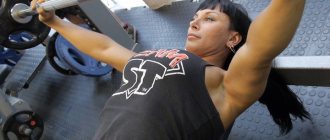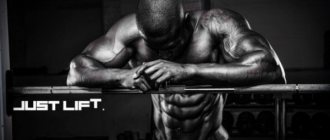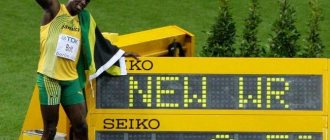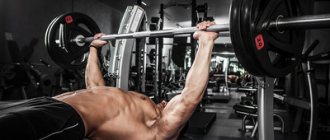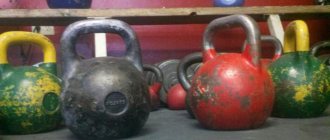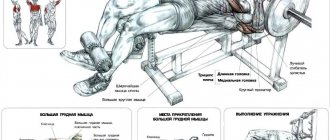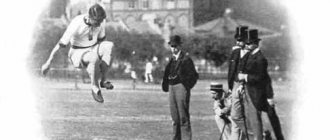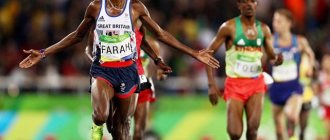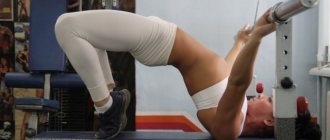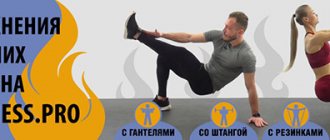WPC-WPO standards
Men WPC-WPO
| Weight category | MSMK | MS | KMS | 1 | 2 | 3 |
| 52 kg | 530 | 470 | 395 | 320 | 280 | 257,5 |
| 56 kg | 580 | 510 | 425 | 347,5 | 305 | 285 |
| 60 kg | 625 | 555 | 465 | 380 | 340 | 305 |
| 67.5 kg | 700 | 625 | 505 | 410 | 360 | 330 |
| 75 kg | 765 | 675 | 530 | 435 | 385 | 355 |
| 82.5 kg | 820 | 720 | 565 | 485 | 435 | 385 |
| 90 kg | 850 | 750 | 585 | 510 | 462,5 | 405 |
| 100 kg | 895 | 775 | 620 | 540 | 487,5 | 450 |
| 110 kg | 915 | 795 | 655 | 570 | 515 | 485 |
| 125 kg | 945 | 810 | 680 | 605 | 537,5 | 505 |
| 140 kg | 970 | 835 | 730 | 625 | 555 | 520 |
| 140 + | 1000 | 870 | 750 | 650 | 585 | 550 |
Women WPC-WPO
| Weight category | MSMK | MS | KMS | 1 | 2 | 3 |
| 44 kg | 340 | 270 | 235 | 190 | 162,5 | 142,5 |
| 48 kg | 370 | 295 | 255 | 197,5 | 170 | 155 |
| 52 kg | 400 | 315 | 280 | 210 | 182,5 | 167,5 |
| 56 kg | 425 | 345 | 305 | 227,5 | 197,5 | 185 |
| 60 kg | 455 | 360 | 325 | 250 | 220 | 197,5 |
| 67.5 kg | 485 | 385 | 345 | 270 | 235 | 215 |
| 75 kg | 510 | 410 | 365 | 285 | 247,5 | 227,5 |
| 82.5 kg | 520 | 430 | 375 | 310 | 280 | 247,5 |
| 90 kg | 530 | 440 | 395 | 330 | 297,5 | 265 |
| 90 + | 545 | 455 | 410 | 350 | 317,5 | 292,5 |
What is this?
To understand the meaning of powerlifting, it is enough to know that this word comes from the merger of two English words: “power” (strength, power) and “lifting” (lifting).
A little history
Back in the early 20th century, powerlifting originated from exercises that weightlifters added to their routines. In the mid-20th century, competitions were already held in Western countries. From the beginning of the 60s, their rules were determined, after which powerlifting began to acquire modern features. 1964 can be considered the year of birth of this power type.
It was then that the first US powerlifting championship took place, albeit unofficial. A year later, the athletes participated in the first national championship. 1972 was the year the International Powerlifting Federation (IPF) was founded, and a year later the first world championship took place. In 1980, women competed for the first time at the World Championships, which took place in the USA; in 1989, the championships among and were merged.
The World Powerlifting Congress (WPC) was formed in 1986, and later a large number of similar organizations appeared. Since then, powerlifting has become widespread in many countries of the world; it is loved not only by the stronger sex, but also by the beautiful part of humanity.
Powerlifting today
Currently, powerlifting is a complex that includes the following exercises:
- back squats;
- bench press;
Due to the fact that there are three competitive exercises, there is another name - powerlifting.
All competing athletes are divided into different categories according to their weight, the number of approaches in each exercise is three. The overall result is the sum of indicators for all exercises. Whoever lifts the heaviest weight is the winner. But this type of strength training is done not only for participation in competitions, but also for amateur purposes to improve strength indicators and strengthen the back, chest and legs.
Did you know?
In powerlifting, it doesn’t matter how defined an athlete’s body is, as opposed to.
The most important factor in evaluation is
strength. However, many bodybuilders started with powerlifting, these include Ronnie Coleman, Andrei Sorokin and others.
AWPC standards (Russia)
*Starting from 2012, new discharge standards have been introduced in the AWPC category: division into single-layer and multi-layer equipment. Each category has its own regulatory requirements.
AWPC Powerlifting Standards - Single Layer Equipment
Men - Single Layer AWPC
| Weight category | Elite | MSMK | MS | KMS | 1 | 2 | 3 |
| 52 kg | 527.5 | 465 | 405 | 365 | 325 | 285 | 242.5 |
| 56 kg | 572.5 | 505 | 440 | 395 | 352.5 | 307.5 | 265 |
| 60 kg | 612.5 | 542.5 | 472.5 | 425 | 377.5 | 330 | 282.5 |
| 67.5 kg | 685 | 605 | 525 | 472.5 | 420 | 367.5 | 315 |
| 75 kg | 742.5 | 657.5 | 572.5 | 515 | 457.5 | 400 | 342.5 |
| 82.5 kg | 792.5 | 702.5 | 610 | 550 | 487.5 | 427.5 | 365 |
| 90 kg | 835 | 737.5 | 642.5 | 577.5 | 515 | 450 | 385 |
| 100 kg | 880 | 777.5 | 677.5 | 610 | 542.5 | 475 | 405 |
| 110 kg | 915 | 810 | 705 | 635 | 562.5 | 492.5 | 422.5 |
| 125 kg | 957.5 | 847.5 | 735 | 662.5 | 590 | 515 | 442.5 |
| 140 kg | 987.5 | 875 | 760 | 685 | 607.5 | 532.5 | 455 |
| 140+ | 1012.5 | 895 | 777.5 | 700 | 622.5 | 545 | 467.5 |
Women - Single Layer AWPC
| Weight category | MSMK | MS | KMS | 1 | 2 | 3 | |
| 44 kg | 310 | 275 | 240 | 215 | 190 | 167.5 | 142.5 |
| 48 kg | 342.5 | 302.5 | 262.5 | 237.5 | 210 | 185 | 157.5 |
| 52 kg | 372.5 | 330 | 287.5 | 257.5 | 230 | 200 | 172.5 |
| 56 kg | 400 | 355 | 307.5 | 277.5 | 245 | 215 | 185 |
| 60 kg | 425 | 375 | 327.5 | 295 | 262.5 | 230 | 195 |
| 67.5 kg | 465 | 412.5 | 357.5 | 322.5 | 287.5 | 250 | 215 |
| 75 kg | 497.5 | 440 | 382.5 | 345 | 307.5 | 267.5 | 230 |
| 82.5 kg | 525 | 465 | 405 | 362.5 | 322.5 | 282.5 | 242.5 |
| 90 kg | 547.5 | 485 | 420 | 377.5 | 337.5 | 295 | 252.5 |
| 90+ | 560 | 495 | 430 | 387.5 | 345 | 302.5 | 257.5 |
AWPC Powerlifting Guidelines - Layered Equipment
Men - AWPC Layered Equipment
| Weight category | Elite | MSMK | MS | KMS | 1 | 2 | 3 |
| 52 kg | 552.5 | 487.5 | 425 | 382.5 | 340 | 297.5 | 255 |
| 56 kg | 597.5 | 530 | 460 | 415 | 367.5 | 322.5 | 275 |
| 60 kg | 642.5 | 567.5 | 495 | 445 | 395 | 345 | 297.5 |
| 67.5 kg | 715 | 632.5 | 550 | 495 | 440 | 385 | 330 |
| 75 kg | 777.5 | 687.5 | 597.5 | 537.5 | 480 | 420 | 360 |
| 82.5 kg | 830 | 735 | 637.5 | 575 | 510 | 447.5 | 382.5 |
| 90 kg | 872.5 | 772.5 | 672.5 | 605 | 537.5 | 470 | 402.5 |
| 100 kg | 920 | 815 | 707.5 | 637.5 | 567.5 | 495 | 425 |
| 110 kg | 957.5 | 847.5 | 737.5 | 662.5 | 590 | 515 | 442.5 |
| 125 kg | 1002.5 | 885 | 770 | 692.5 | 617.5 | 540 | 462.5 |
| 140 | 1035 | 915 | 795 | 715 | 635 | 557.5 | 477.5 |
| 140+ | 1060 | 937.5 | 815 | 732.5 | 652.5 | 570 | 487.5 |
Women - AWPC Layered Equipment
Features of the AWPC category
- Doping control. Mandatory testing of 10% of competition participants for the use of prohibited drugs;
- Disciplines: powerlifting, bench press, deadlift;
- Divisions: no equipment, single-layer equipment, multi-layer equipment;
- Restrictions in the multi-layer equipment division: overalls and shirts - no more than 3 layers, knee bandages - length no more than 2.5 m, wrist straps - no more than 1 m long, belt - no wider than 10 cm;
- Weigh-in - one day and 2 hours before the start.
- Equipment: monolift, specialized bars for bench press, squat and deadlift.
Powerlifting Exercises
The bench press, squat and deadlift are the basic exercises. This is due to the fact that during training almost all muscles work. The complex is indicated not only for competitions, it perfectly develops strength and promotes muscle gain.
Despite the fact that the technique of performing exercises at competitions on the platform differs from the technique of performance during training, this complex is invaluable in preparing athletes of other sports.
Each exercise requires correct execution technique and correct positioning.
Squats
The barbell squat is the first element performed in a powerlifting competition. The squat technique is as follows:
- The athlete removes the barbell from the racks with a comfortable grip and places it on his back on the upper part of the trapezius.
- Moving away from the rack, the athlete takes the following position: stands with a straight back, legs apart slightly wider than shoulders.
- When performing a squat, you need to pay attention to the following points:
- at the lowest point, the hip joint should be below the knee;
- The center of gravity should be on the feet.
- Lifting should be done with a straight back.
- After completing the element, the athlete must return the barbell back to the racks.
If an athlete drops the barbell during a squat, he will be penalized. You need to start the element and return the barbell to the racks only at the command of the judge.
Bench press
The technique for performing a bench press while lying on a bench is as follows:
- The athlete lies down on the bench and removes the bar from the racks. Wherein:
- the grip can be medium or wide;
- The arms should be straight and the pelvis raised.
- When lowering the projectile, you need to ensure:
- press speed - it should be maximum;
- shoulder blades and shoulders - the first should be brought together, and the second should be lowered;
- legs - they should be as close to the pelvis as possible.
- Returning the bar to the racks at the judge's command.
During the execution of the element, you cannot change the position of your legs and lift your heels off the floor. Also, you should not lift your head, shoulder blades and buttocks from the bench.
Deadlift
The deadlift is the last element in powerlifting competitions, the deadlift technique is as follows:
- The athlete takes the starting position: stands with a straight back, placing his feet shoulder-width apart or slightly wider.
- Bend over with a straight back, the athlete grabs the barbell with a comfortable grip.
- When lifting the barbell, you need to ensure that:
- the back remained straight;
- the arms were also straight;
- the rise was carried out by straightening the legs.
- Lowering the projectile is possible only with straightened knees and shoulders pulled back.
The barbell can be raised without the judge's command, but lowered onto the platform only upon command. Do not support the bar with your thighs or use straps.
IPF standards (Russia)
IPF Men's Powerlifting Standards
| Weight category | MSMK | MS | KMS | 1 | 2 | 3 |
| 53 kg | – | – | 410 | 325 | 282,5 | 260 |
| 59 kg | 625 | 570 | 455 | 362,5 | 315 | 290 |
| 66 kg | 700 | 635 | 510 | 402,5 | 350 | 320 |
| 74 kg | 770 | 695 | 537,5 | 440 | 385 | 352,5 |
| 83 kg | 835 | 747,5 | 582,5 | 482,5 | 422,5 | 387,5 |
| 93 kg | 880 | 787,5 | 610 | 520 | 465 | 412,5 |
| 105 kg | 920 | 815 | 645 | 552,5 | 500 | 460 |
| 120 kg | 955 | 835 | 687,5 | 600 | 530 | 497,5 |
| 120+ kg | 980 | 860 | 735 | 617,5 | 545 | 510 |
IPF Women Powerlifting Standards
| Weight category | MSMK | MS | KMS | 1 | 2 | 3 |
| 43 kg | – | – | 242,5 | 175 | 150 | 137,5 |
| 47 kg | 367,5 | 297,5 | 262,5 | 190 | 165 | 150 |
| 52 kg | 405 | 325 | 290 | 210 | 182,5 | 167,5 |
| 57 kg | 435 | 352,5 | 312,5 | 227,5 | 200 | 182,5 |
| 63 kg | 475 | 385 | 337,5 | 252,5 | 220 | 202,5 |
| 72 kg | 507,5 | 412,5 | 367,5 | 285 | 247,5 | 227,5 |
| 84 kg | 537,5 | 447,5 | 405 | 327,5 | 285 | 260 |
| 84+ kg | 552,5 | 475 | 422,5 | 352,5 | 320 | 285 |
Powerlifting categories and basic powerlifting standards
In men's powerlifting, sports categories are assigned when the following standards are met at competitions:
Table: Rank standards for powerlifting
| Powerlifting standards, category requirements | ||||||||
| Movement | Powerlifting titles and categories, barbell weight (kg) | |||||||
| Squat | ||||||||
| Squat | ||||||||
| Squat | ||||||||
| Squat | ||||||||
| Squat | ||||||||
| Squat | ||||||||
| Squat | ||||||||
| Squat | ||||||||
Many weightlifters often come across such phrases as “APWC and WPC standards.” Due to the insufficient amount of information, the meanings of the abbreviations, as well as the standards themselves, remain a mystery to them. After reading this article, you will learn:
- what are AWPC and WPC standards;
- what is their fundamental difference;
- get data according to AWPC standards.
What are AWPC and WPC
Due to the popularity of powerlifting, which is becoming more and more popular these days, new federations of this sport are emerging. Hundreds of athletes flock to such associations, because such organizations, on the one hand, hold powerlifting competitions, and on the other, they allow you to get a rank. What are AWPC and WPC?
WPC (World Powerlifting Congress) is a powerlifting organization founded in 1986 by Ernie Franz. This is an international non-profit congress that unites more than 30 countries under its auspices. Largely thanks to this organization, powerlifting is becoming increasingly popular as a sport throughout the world. WPC performs the following functions:
- establishes the rules for holding powerlifting competitions;
- establishes standards thanks to which athletes can receive a rank;
- creates conditions for the development of powerlifting;
- organizes and conducts events in the sport under discussion.
AWPC (Amateur World Powerlifting Congress) is an offshoot of the WPC professional league, which is characterized by more lenient standards and strict doping control during powerlifting competitions. Another, unofficial name for the AWPC is the “League of Straight People.” This organization is called this way because competition participants achieve their sporting results without the use of chemicals to build muscle mass and enhance the physiological characteristics of the body.
Powerlifters consider it an honor to belong to both one and the other organization.
Squats
So what are the AWPC standards? The squat is one of the three basic powerlifting exercises. In this case, equipment means bandages for hands and knees, as well as belts.
The standards for athletes without equipment are as follows:
If multi-layer equipment is used, then you need to focus on the following values:
If an athlete competes in single-layer equipment, then the standards are as follows:
What you will need for classes
By doing powerlifting, you can easily get some. When lifting heavy weights, it is easy to overexert yourself and thereby injure some part of your body. Therefore, there are special devices for safer execution.
Outfit and equipment
Powerlifting equipment can be either supportive or non-supportive. Non-supporting is allowed to be used everywhere, taking into account “unequipped” and “equipped” powerlifting. There are the following types of equipment:
Within different federations (IPF, WPC, AWPC, IPA, IPA-A, WDFPF, GPC), T-shirts and overalls with 1-3 layers, as well as bandages of various lengths, are allowed for equipment.
Did you know?
Equipment is used to protect against injury, as well as to lift more weight.
Thanks to bandages and belts, an athlete can lift 5-15 kg more, and now, with the advent of new modern products, the weight gain can be as much as 150 kg! Now let's move on to the equipment
. It is represented by the following devices:
Training rules
Powerlifting is primarily about strength. This means that the athlete must gradually increase the intensity of training and the weight lifted. A lifter's training regimen is not the same as . If a bodybuilder works one or several muscle groups, then a lifter works one or two competitive exercises. Powerlifting training is very high intensity, so it is important to allow time for rest and recovery. You should also maintain a pause of 2-5 minutes between approaches.
The most optimal number of trips is 3-4 times a week.
The very nature of the classes should be periodic. This means varying the load from light to heavy. It is best to create a weekly or monthly plan of varying complexity and follow it.
As for nutrition, half of a lifter’s diet should be complex carbohydrates, which replenish energy reserves. Simple carbohydrates found in baked goods and sweets will also be useful for quickly restoring strength immediately after exercise. No less important in an athlete are. There should be enough of them for muscle mass to grow. This is approximately 35% of the diet. The remaining 15% is fat. They support and protect from damage. In addition to the training and nutrition regimen, one should not forget about the regimen. You need to sleep at least 8-10 hours a day, and also set aside time for daytime sleep if possible, because muscles grow during rest.
